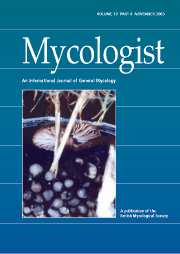Article contents
Mycorrhizal symbiosis: myths, misconceptions, new perspectives and further research priorities
Published online by Cambridge University Press: 25 October 2005
Extract
Symbiotic mycorrhizal fungi play a central role in biological interactions and biogeochemical cycles since the carbon they obtain from their photosynthetic plant hosts is allocated via the mycorrhizal mycelium to the soil ecosystem (Finlay & Rosling, 2005). The focus of much early mycorrhizal research was on the effect of the mycorrhizal mycelium on uptake of inorganic nutrients by individual plants, often studied in the absence of other soil organisms. More recent research has a broader focus on a wider range of possible effects (Newsham et al., 1995; Finlay, 2004). In addition to interactions with their own host plant roots, the mycelia interact with a range of organic and inorganic substrates, as well as with different organisms such as bacteria, fungi, soil micro- and meso-fauna and the roots of secondary host plants. Three trends in mycorrhizal research, noted by Smith and Read in 1997, are still relevant today. New information from the fossil record and, in particular, developments in molecular phylogeny have enabled progress in understanding different evolutionary aspects of the symbiosis (Hibbett et al., 2000; Corradi et al., 2004; Bidartondo, 2005). Secondly, there is an increased emphasis on the extraradical mycelium, the most dynamic component of the symbiosis, the fungal hyphae growing from the host plant roots that make direct contact with organic and inorganic substrates and interact with other soil organisms (Leake et al. 2004a).
- Type
- Original Article
- Information
- Copyright
- © 2005 The British Mycological Society
- 1
- Cited by


